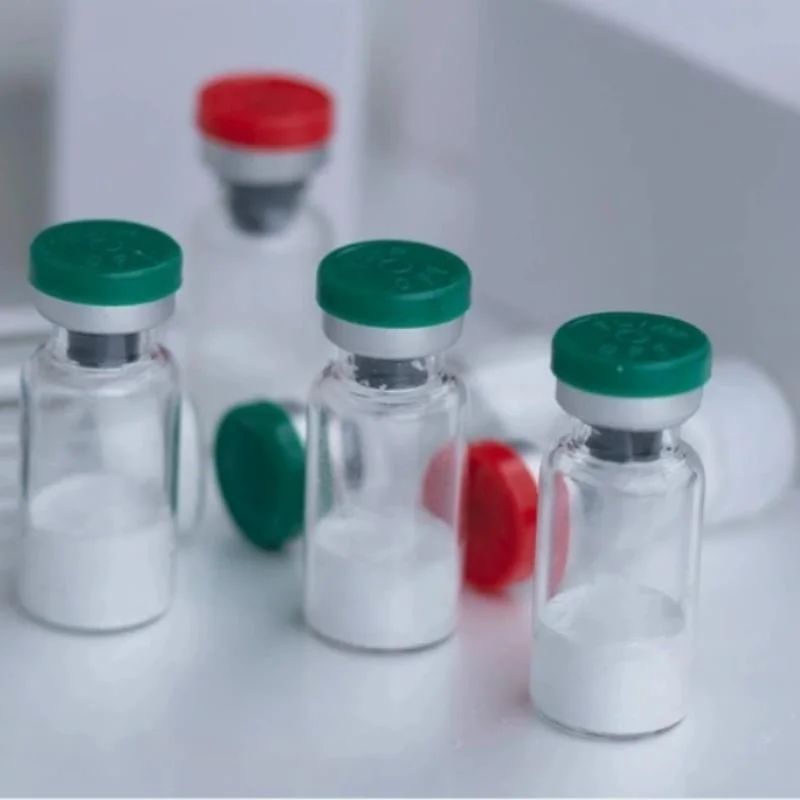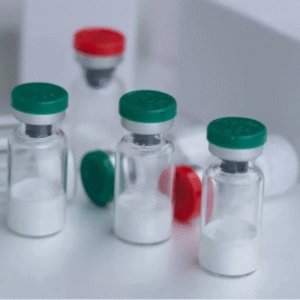GLOW is a compounded peptide blend designed for research and performance recovery applications. The formulation typically includes:
- BPC 157 – 10 mg
A synthetic pentadecapeptide derived from a naturally occurring protein in human gastric juice. - GHK-Cu – 50 mg
A copper-binding tripeptide composed of glycine, histidine, and lysine, known for its role in skin and tissue regeneration. - TB500 – 10 mg
A synthetic peptide fragment of Thymosin Beta-4, responsible for promoting cell migration and tissue repair.
2. Benefits:
Each peptide in the GLOW formulation has distinct and complementary biological effects, particularly in the areas of recovery, regeneration, and inflammation modulation.
BPC 157:
- Promotes healing of soft tissues, including muscles, tendons, ligaments, and the gastrointestinal tract.
- Exhibits anti-inflammatory properties by modulating nitric oxide and cytokine pathways.
- Supports angiogenesis (formation of new blood vessels), which improves blood flow to damaged areas.
- May help protect the gut lining, based on animal models.
GHK-Cu:
- Enhances collagen production and wound healing in skin and connective tissue.
- Reduces oxidative stress and inflammation by modulating gene expression involved in tissue repair.
- May support hair growth and skin rejuvenation in cosmetic applications.
- Promotes blood vessel growth (angiogenesis) and helps maintain extracellular matrix integrity.
TB500:
- Encourages cell migration, crucial for rapid tissue repair.
- Reduces inflammation and oxidative stress in injured tissues.
- Accelerates recovery of muscles, tendons, and ligaments, particularly in overuse or trauma-related injuries.
- Supports neural regeneration and may aid in central nervous system recovery (preclinical data).
Note: While individual peptides have supportive preclinical and limited human research, combined use (as in GLOW) is experimental and not yet evaluated in large-scale clinical trials.
3. Dosage Protocol:
Disclaimer: The following protocol is based on research practices and should not be considered medical advice. Always consult with a qualified professional when considering peptide use in a research setting.
Typical Research Protocol for GLOW (Combination of BPC 157 + GHK-Cu + TB500):
- Administration Method:Subcutaneous (SC) injection, preferably near the site of injury for targeted benefit, or systemically (e.g., abdominal area) for general recovery.
- Dosage:
- Total Volume: Typically reconstituted to deliver 2–3 mg of combined peptides per injection, adjusted based on the dilution and individual goals.
- Example dose breakdown per injection (if equally divided per 10 mL vial):
- BPC 157: ~0.5–1 mg
- GHK-Cu: ~2–3 mg
- TB500: ~0.5–1 mg
- Frequency:
- 2–3 times per week, depending on injury severity, performance demands, or tissue healing goals.
- Cycle Duration:
- Commonly used in 4–6 week cycles.
- A maintenance phase may follow (e.g., once weekly injections) depending on ongoing needs or research goals.
Summary:
GLOW combines three well-studied peptides—BPC 157, GHK-Cu, and TB500—into a synergistic blend aimed at enhancing recovery, reducing inflammation, and supporting tissue regeneration. Each peptide offers unique biological actions that complement the others, making GLOW a popular investigational tool for those exploring advanced recovery and performance support protocols. While promising, combined use remains investigational and should be approached with appropriate oversight.


Reviews
There are no reviews yet.